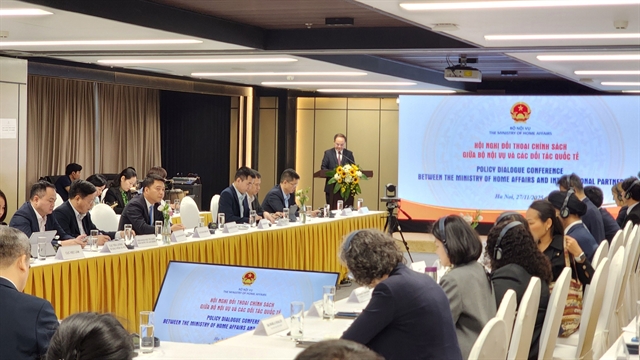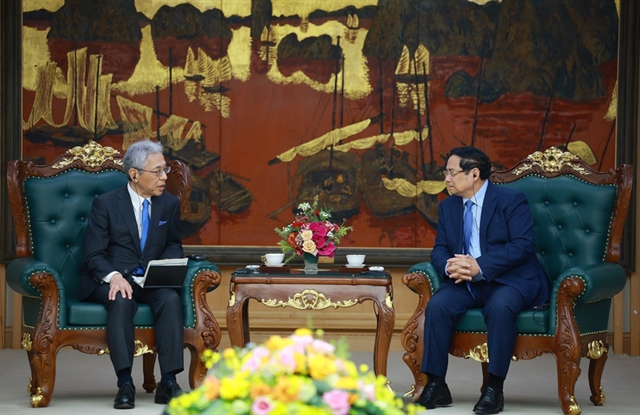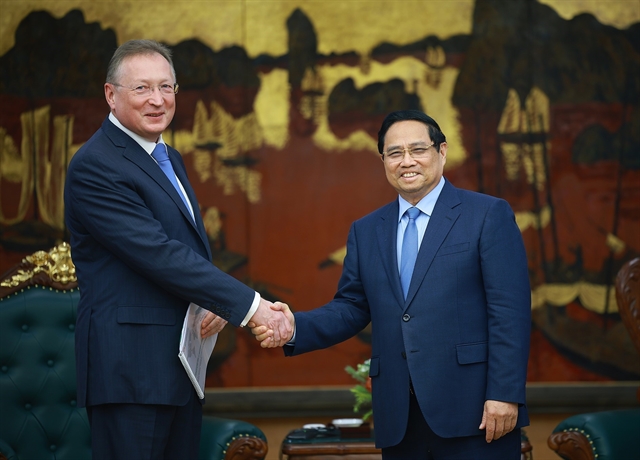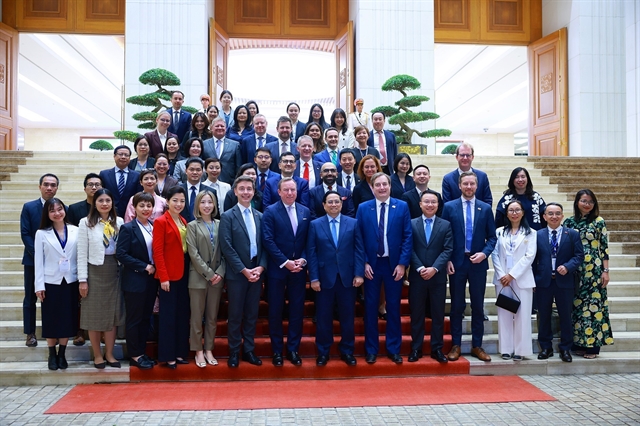 Society
Society


|
| Residents of Điền Trung Commune in the northern central province of Thanh Hóa escape poverty by cultivating medicinal plants. — VNA/VNS Photos |
HÀ NỘI — As one of the first 30 countries in the world to adopt a multi-dimensional poverty standard, Việt Nam has highlighted poverty reduction as a key pillar of national development policy.
This approach, designed to ensure a minimum standard of living while advancing the United Nations Sustainable Development Goals, is a cornerstone of the nation’s pledge to the 2030 Agenda for Sustainable Development.
Launched in 2021 at the behest of Prime Minister Phạm Minh Chính, the nationwide campaign 'For the poor – Leaving no one behind' has gone beyond words to shape real change.
By combining State policy with the active involvement of the Việt Nam Fatherland Front and contributions from across society, the movement has reached communities large and small.
Rather than relying solely on aid, households have been encouraged to take the initiative, with many choosing to remove themselves from the official poverty list.
This shift in mindset has helped drive down poverty rates faster than expected, laying the groundwork for the remarkable figures recorded in recent years.
According to the National Office for Poverty Reduction, Việt Nam has surpassed its own targets. The national poverty rate has dropped from 5.2 per cent in 2021 to 1.9 per cent in 2024, and is projected to decline further to around 1 per cent by the end of 2025. Among ethnic groups, the rate has fallen to 12.5 per cent, with an average annual reduction of 4.5 per cent.
.jpg)
|
| Tuyên Quang Province steps up efforts to eliminate makeshift and dilapidated housing. |
More than statistics
Behind these figures lies a transformation in approach. Rather than relying on short-term aid, poverty reduction programmes now focus on conditional support that promotes long-term resilience. Essential infrastructure such as roads, schools, healthcare facilities, clean water and sanitation has been prioritised, particularly in disadvantaged regions.
Coastal and island areas, once considered extremely difficult, have seen 19 communes emerge from poverty. This progress has narrowed regional disparities, boosted economic growth and lifted communities once left behind.
“Policies and legislation on poverty reduction have been issued in a comprehensive manner to support the poor, with priority given to vulnerable groups, ethnic minorities and areas of extreme hardship,” said Deputy Director of the National Office for Poverty Reduction Phạm Hồng Đào.
“We are gradually moving away from unconditional aid towards conditional support that encourages self-reliance,” he told the Voice of Vietnam.
Continuing challenges
Despite these advances, challenges remain.
In parts of the northern midlands, mountainous areas and the Central Highlands, poverty rates remain well above the national average, with some localities reporting figures above 50 per cent. In the most isolated communities, the rate can exceed 70 per cent, Đào said.
Basic infrastructure is still lacking in many remote areas, from healthcare and education to production and logistics. Climate change, population ageing, urbanisation and global economic uncertainty add further pressure. At the same time, some communities continue to depend heavily on State support, underscoring the need for more sustainable models tailored to local realities and cultures.
He said that Việt Nam is now preparing its multi-dimensional poverty standards for 2026-2030. Proposals suggest raising income thresholds to VNĐ2.8 million (US$106) per person per month in urban areas and VNĐ2.2 million ($83) in rural areas, while also adjusting benchmarks for access to basic services such as information, clean water, sanitation and the environment.
The new strategy will integrate poverty reduction with green growth, digital transformation and climate adaptation, alongside the national target programme on new rural development.
The emphasis will be on stable job creation, digital skills training and opening up livelihood opportunities in both rural and urban areas, linked with entrepreneurship and the sharing economy.
Poverty reduction in Việt Nam has long relied on collective effort, with Government, businesses and communities all playing their part.
Over the next five years, Việt Nam has set its sights on ending poverty in all forms and building resilience for the future. — VNS




